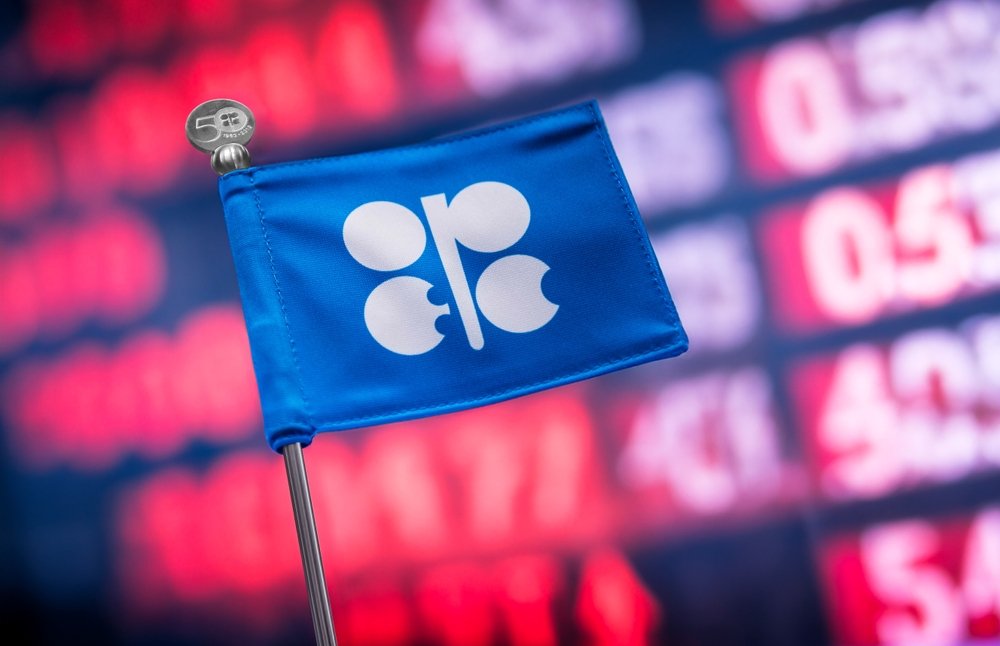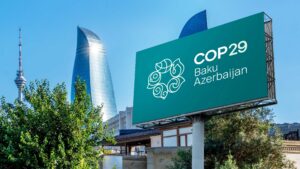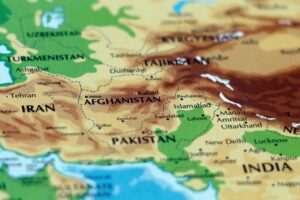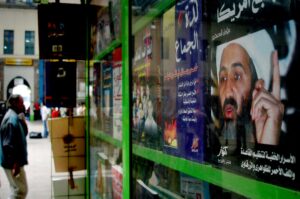The ministerial meeting of the OPEC+ members that took place on 3 – 4 March clearly demonstrated the importance of this organization and, specifically, Saudi Arabia as its key participant for the stability of the global oil market. The OPEC+ decision to prolong current production cuts for, at least, one more month as well as the Saudi decision to extend the period of limitations on its oil output that it voluntary adopted will definitely push oil prices higher, helping the market to achieve a much expected supply deficit in 2021.[i]
Yet, the event also reminded observers that the proclaimed unity of OPEC+ members in their decision to support market recovery in light of the unprecedented oversupply of oil created by the COVID-19 pandemic is only a facade hiding serious inner tensions. The gradual rise of oil prices encouraged some of the participants (including but not limited to Russiaand Kazakhstan) to raise the question of easing production cut quotas previously adopted by OPEC+. An opposing group of countries led by Saudi Arabia insisted on a conservative approach, citing uncertainties regarding the speed of vaccination in the world and prospects for a global economic recovery. Since as early as December 2020, every OPEC+ meeting has erupted in heated discussions reminiscent of the events of March-April 2020, when Russia’s rejection to deepen production cuts led to the breakdown of the OPEC+ process and caused a price war between oil producers with many losers and almost no winners as a result.
Adapting to the Brave New World
The growing speed of transition away from fossil-based systems of energy production and consumption negatively affected the growth of demand, convincing analysts of the approaching peak of oil consumption.
Both defenders of stricter OPEC+ production policies and their opponents refer in their reasoning to the fact that the organization emerged much before the COVID crisis as a response to deeper structural changes in the global oil market that made the position of oil producers more vulnerable while strengthening the abilities of consumers to dictate their will. Moreover, the challenges created by such changes will not disappear with the virus. The roots of these transformations that began in late 2000s and hit the market by the mid-2010s are connected to two factors: the impact of the US shale revolution[ii] on the global hydrocarbon market and the beginning of the global energy transition to non-carbon fuels. Due to the shale revolution (de facto a new technological revolution), the US not only became the largest producer and exporter of hydrocarbons, but also stimulated the emergence of new market players in other countries. Meanwhile, the growing speed of transition away from fossil-based systems of energy production and consumption that started in developed countries negatively affected the growth of demand, convincing analysts of the approaching peak of oil consumption. Driven by the above-mentioned factors, the growth rates in global oil supply have been steadily surpassing growth in oil demand since 2011, causing the recent oversupply of markets. In 2014-16, Saudi Arabia’s attempt to drop down global oil prices in order to bankrupt its market rivals (first of all, shale producers) ended up with its subsequent failure. After that, the Kingdom adopted cooperative tactics, i.e. to regulate the market through the reduction of oil output and removing extra barrels of supply.
Yet, neither Saudi Arabia’s nor OPEC’s capacities alone were enough to succeed. The high sensitivity of shale oil production to oil prices subsequently shortened the duration of oil price cycles and changed their amplitude. Given the ability of shale oil producers to increase output quickly if encouraged to do so by positive market dynamics, oil prices were unable to rise too high and/or for too long. In addition to that, non-OPEC conventional producers would also undermine OPEC’s efforts by increasing their oil output during periods of price rise, thereby bringing the latter to an end sooner. By 2016, OPEC could only control price dynamics to a limited extent. The situation could only be changed by increasing the number of countries ready to coordinate their production policies with OPEC. The purpose of this was to increase shared production capacities that could be excluded from global output while decreasing the potential number of free-riders. Under these circumstances, coordination with Russia, one of the largest oil producers in the world, and some other non-OPEC players seemed to be logical. By late 2016 the Russian leadership also realized that without active cooperation with OPEC it would be difficult to ensure stable budget incomes.[iii] Consequently, in 2016 joint Russian-Saudi efforts led to the Vienna Agreement between OPEC and non-OPEC countries (the so-called OPEC+), aimed at decreasing production in order to ensure a degree of stability in oil prices. The initial six-month OPEC+ deal has since been extended several times and even helped to offset some negative oil market trends in 2018-2019.[iv]
The Origins of Troubles
However, the same reasons that led to the creation of the OPEC+ also planted a time bomb under it. That bomb already exploded once. First of all, this organization unites countries with absolutely different socio-economic and political conditions, and pursuing different goals by joining it. Some of these either cannot or do not want to be in strict compliance with adopted production cuts. From the very beginning, discipline – a key element for the OPEC+ strategy as a market regulator – proved to be a problem. The in-house free riders (such as Venezuela, Iran and Libya that, by now, even received exemption from the need to follow production cuts) and cheaters (such as Russia or Iraq) were setting a negative example for others. Only the events of the 2020 price war and understanding the depth of the market crisis brought on by the COVID-19 pandemic managed to raise the discipline to an extent.
Russia and Saudi Arabia, the two key players within the OPEC+, have serious differences both in terms of their priorities and the characteristics of their oil sectors.
Secondly, Russia and Saudi Arabia, the two key players within the OPEC+, have serious differences both in terms of their priorities and the characteristics of their oil sectors. Moscow is more interested in oil prices remaining within a certain price corridor rather than seeing them constantly grow. Its budget’s break-even price of oil is set around USD43pb (approx. twice as low as that of Saudi Arabia) while its most comfortable corridor of price fluctuation is believed to be between USD50 – 60pb (also below Saudi budgetary needs).[v] Apart from considering that ever-growing oil prices lead to instability and the overheating of the market, Moscow is motivated by domestic considerations too. Due to the specifics of the Russian economic structure and taxation system, the higher oil prices are the lower corporate income per barrel gets. As a result, the more oil prices climb above USD43pb the less Russia is motivated to stay loyal to OPEC+ obligations. Not to mention that the prolonged freezing of oil production under the current agreements is harmful for Russia’s old oil wells, threatening Russian companies with higher costs of re-launching. Saudi Arabia with its extremely favorable conditions of oil extraction is not subject to these issues. At the same time, it needs oil prices to go higher than USD60pb to cover its budget deficit, fulfill its diversification programs and maintain the higher value of Saudi Aramco for the sake of further privatization.[vi]
Oh, those Russians…
As opposed to the majority of the OPEC+ countries whose oil production is largely concentrated in the hands of government-controlled national oil companies, Russian oil producers enjoy relative market freedom. Consequently, when persuading them to cut oil output, the Kremlin predominantly uses ‘carrots’ rather than ‘sticks’. This strategy already played out against the OPEC+. By the end of 2019 all existing ‘carrots’ had been used up by the Kremlin. The provision of further tax exemptions and financial support to Russian oil producers became economically unjustifiable, while all potential loopholes in the Vienna agreement that allowed Russian producers to avoid compliance with OPEC+ obligations had been exhausted.
Under such circumstances, the additional deepening of production cuts by 1.5mbpd, suggested by Saudi Arabia to be introduced after March 2020, became impossible for Moscow to agree to without further lowering the level of compliance with already existing obligations. Rosneft’s Igor Sechin and Gazprom Neft’s Aleksandr Dyukov voiced their clear resistance to further production cuts under OPEC+ as this would have gone against their own development plans by virtue of limiting their expected income. In the end they managed to persuade Russian President Vladimir Putin.[vii] Russia restored its participation in OPEC+ in April 2020 and has implemented the new production quotas since May 2020) as it felt the economic impact of the COVID-19 crisis. Yet, Russian oil producers can now afford to disobey the Kremlin and, as shown by recent discussions among them, they could even push Russia’s leadership to leave OPEC+ again at some point in the future when the market situation stabilizes. By March 2021, Russian producers such as Gazprom Neft indeed started to cautiously suggest that oil production cuts should be eased for the sake of future development projects.[viii] This cannot but irritate and alert the Saudi side that believes it necessary to keep Russia on board of the OPEC+.
An Inevitable Hard Choice
Finally, market transformations brought about by shale revolution and the energy transition de facto made conventional oil producers face a binary choice without any third alternative:
- to slow down the process of falling prices and even try to reverse it through the introduction of production cuts;
- or to immediately monetize their natural resources which basically implies an active and aggressive war for market share by increasing the volume of exports (“all in strategy”) and expecting that competitors will not survive price competition.
Formally, by joining the OPEC+, producers agreed to follow the market regulation strategy. However, this approach is only a temporary remedy that lifts the pain but does not address the source of the issue. The OPEC+ can only affect the supply side of the market to a limited extent and it has even less leverage to influence consumers.[ix] Meanwhile, even though the recovery of the US shale will probably take a long time (at least the next four years), its influence did not cease to exist.[x] Furthermore, as it was demonstrated on previous instances, it can always surprise conventional producers by its ability to regenerate faster than expected. On the other hand, the energy transition not only remains a continued reality but has all chances to speed up, thus decreasing oil demand in the long-term perspective. Control over the demand side comes at a high cost. OPEC+ members have to sacrifice their respective development plans, thereby risking their future and feeding free-riders outside (and inside) the organization. Meanwhile, the success of their joint efforts is not always guaranteed and the peak of oil demand is probably approaching. All of this naturally tempts OPEC+ members to change their decision regarding the most effective strategy to be pursued in the age of market transformation in favor of resource monetization. The latter, however, goes against the logic of OPEC+.
The higher oil prices go the bigger the list of those countries who are dissatisfied with strict production limits gets. COVID’s blow to oil producer economies also makes them consider prioritising an increase in incomes received from their oil sector to fuel economic recovery. In other words, while initially the pandemic was the reason for increasing coordination between OPEC+ producers, the recovery process combined with relative market stability can turn them less loyal or even prompt them to quit the organization. The list of OPEC+ “dissidents” might get longer, including the very core members of the forum such as the Arab monarchies of the Gulf. Despite their initial role in calling for the emergence of OPEC+, by 2021, they found that their domestic economic situation, production cost calculations and market conditions put each of them in different positions compared to Saudi Arabia, which can boast of relatively favorable conditions.[xi] This does not help unity. Kuwait is experiencing serious financial problems and it would not mind having additional sources of income.[xii] In the summer 2020, the UAE was violating production obligations while complaining that their quota was unfairly high. In November – December 2020, Abu Dhabi even considered the option of quitting OPEC+. The UAE periodically expressed concerns about the launch of its regional price benchmark on the basis of Murban crude variety and the feasibility of its oil industry’s development plans if strict production cuts continue.[xiii] Finally, during 2020, Oman actively exploited loopholes in the OPEC+ agreement that excluded condensate (considered by some analysts as de facto a type of light oil) from production quotas. Consequently, the losses of Oman’s oil industry from production cuts were compensated by an increased output of condensate.[xiv]
What’s next?
Positive trends in the market and predictions of growing supply deficit by the end of 2021 make it possible to assume that the beginning of the next year might put the extension of the OPEC+ agreement beyond April 2022.
The tensions among Arab producers of the Gulf is a relatively new phenomenon. It became visible only in 2020. However, together with unknown perspectives of oil production in Iran, Libya and Venezuela as well as Russia’s changing moods, it seriously affects the behaviour of Riyadh. The Kingdom, due to the above-mentioned reasons, tries to keep the OPEC+ framework together. In 2021, more so than before, it demonstrates flexibility during negotiations and even surprised its troublemaking partners with some concessions. Under these circumstances, the Saudi voluntary decision to make extra production cuts during the first months of the year as well as permission to Russia and Kazakhstan to increase their own output were clear steps to curry favor in exchange for the loyalty of other OPEC+ members. However, the question to what extent Saudi Arabia is ready to continue its policies of appeasing the critics while they become more and more vocal on the need to ease production cuts remains open. The positive trends in the market and predictions of growing supply deficit by the end of 2021 make it possible to assume that the beginning of the next year might put the extension of the OPEC+ agreement beyond April 2022 (when the current framework agreement within which OPEC+ members revised production quotas expires) under considerable doubt.
[i] Kate Dourian, ‘OPEC+ to Keep Output Tight as Russia Squeezes further Compromise from Saudi’, The Middle East Economic Survey, 5 March 2021 https://www.mees.com/2021/3/5/opec/opec-to-keep-output-tight-as-russia-squeezes-further-compromise-from-saudi/9b1a5c50-7dbc-11eb-88ca-97e0c3b98eec accessed 6 March 2021
[ii] US shale revolution – a term marking the beginning of the active use of the combination of hydraulic fracturing, horizontal mining and seismic technologies that allowed the US substantially increase the production of shale oil and gas in the late 2000s – 2010s subsequently turning this country in one of the largest producers and exporters of hydrocarbons.
[iii] RIA Novosti, ‘Putin: Russia Appreciates the Saudi King Input in Cooperation’, RIA Novosti, 14 October 2019, [in Russian] https://ria.ru/20191014/1559769929.html (accessed 29 July 2020).
[iv] The text of the Charter can be found here: https://minenergo.gov.ru/node/15216
[v] Vitaliy Gaydayev, ‘Budget Urals’, Kommersant, 13 January 2021, [in Russian], https://www.kommersant.ru/doc/4640862 accessed 6 March 2021
[vi] Yuri Barsukov, ‘Like Empty Dreams’, Kommersant, 2 March 2021, [in Russian], https://www.kommersant.ru/doc/4711116 accessed 6 March 2021
[vii] Konstantin Simonov, ‘The Opponents of the OPEC Agreement with Sechin in the Lead Strengthened their Positions’, Forbes. 15 May 2019. [in Russian] https://www.forbes.ru/biznes/376003-protivniki-sdelki-s-opek-vo-glave-s-sechinym-usilili-pozicii-prislushaetsya-li-k-nim accessed 5 July 2020.
[viii] Olga Mordyushenko, ‘Gazprom Neft Hopes on the Ease of OPEC+ Limitations’, Kommersant, 18 February 2021, https://www.kommersant.ru/doc/4694986 accessed 6 March 2021.
[ix] Though Saudi Arabia is actively investing in downstream in Asia.
[x] Kate Dourian, ‘OPEC+ to Keep Output Tight as Russia Squeezes further Compromise from Saudi’, The Middle East Economic Survey, 5 March 2021 https://www.mees.com/2021/3/5/opec/opec-to-keep-output-tight-as-russia-squeezes-further-compromise-from-saudi/9b1a5c50-7dbc-11eb-88ca-97e0c3b98eec accessed 6 March 2021.
[xi] Neil Quilliam, ‘The Future of OPEC+’, ShaleMag, 8 February 2021, https://shalemag.com/the-future-of-opec/, accessed 6 March 2021.
[xii] Neil Quilliam, ‘Russia and Saudi Arabia Power Risks OPEC+ Break-up’, 24 November 2020, https://www.chathamhouse.org/2020/11/russia-and-saudi-arabia-power-risks-opec-break accessed 6 March 2021.
[xiii] Grant Smith, ‘Dramatic Meetings Leave OPEC+ in Relationship-Mending Mode’, World Oil, 12 February 2020, https://www.worldoil.com/news/2020/12/2/dramatic-meetings-leave-opecplus-in-relationship-mending-mode accessed 6 March 2021.
[xiv] Jamie Ingram, ‘Oman Capitalizes on OPEC+ Condensate Exemption with 2020 Output Surge’, The Middle East Economic Survey, 19 February 2021, https://www.mees.com/2021/2/19/oil-gas/oman-capitalizes-on-opec-condensate-exemption-with-2020-output-surge/61236600-72be-11eb-8882-9bd36b1da4ce accessed 6 March 2021.

















